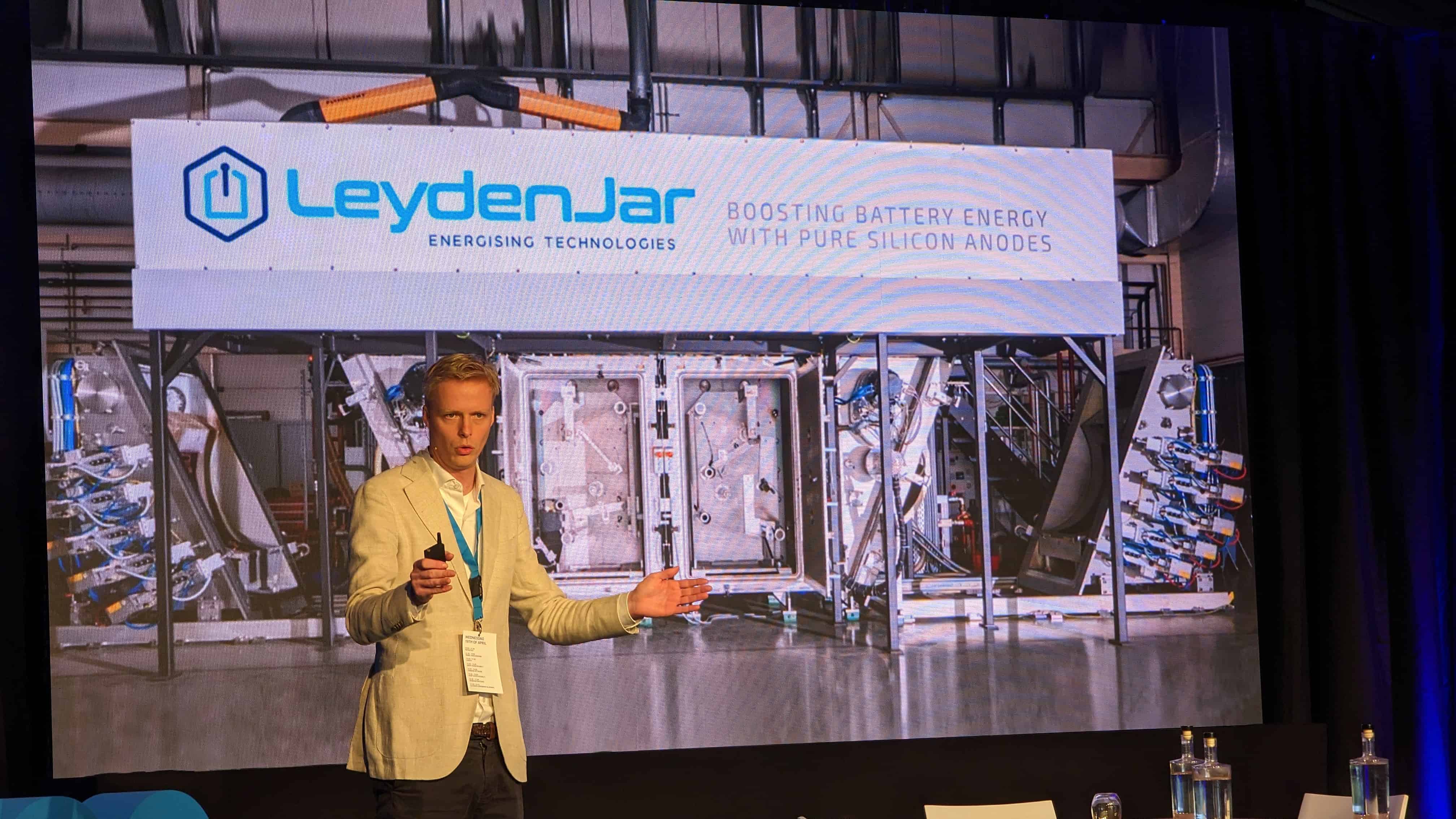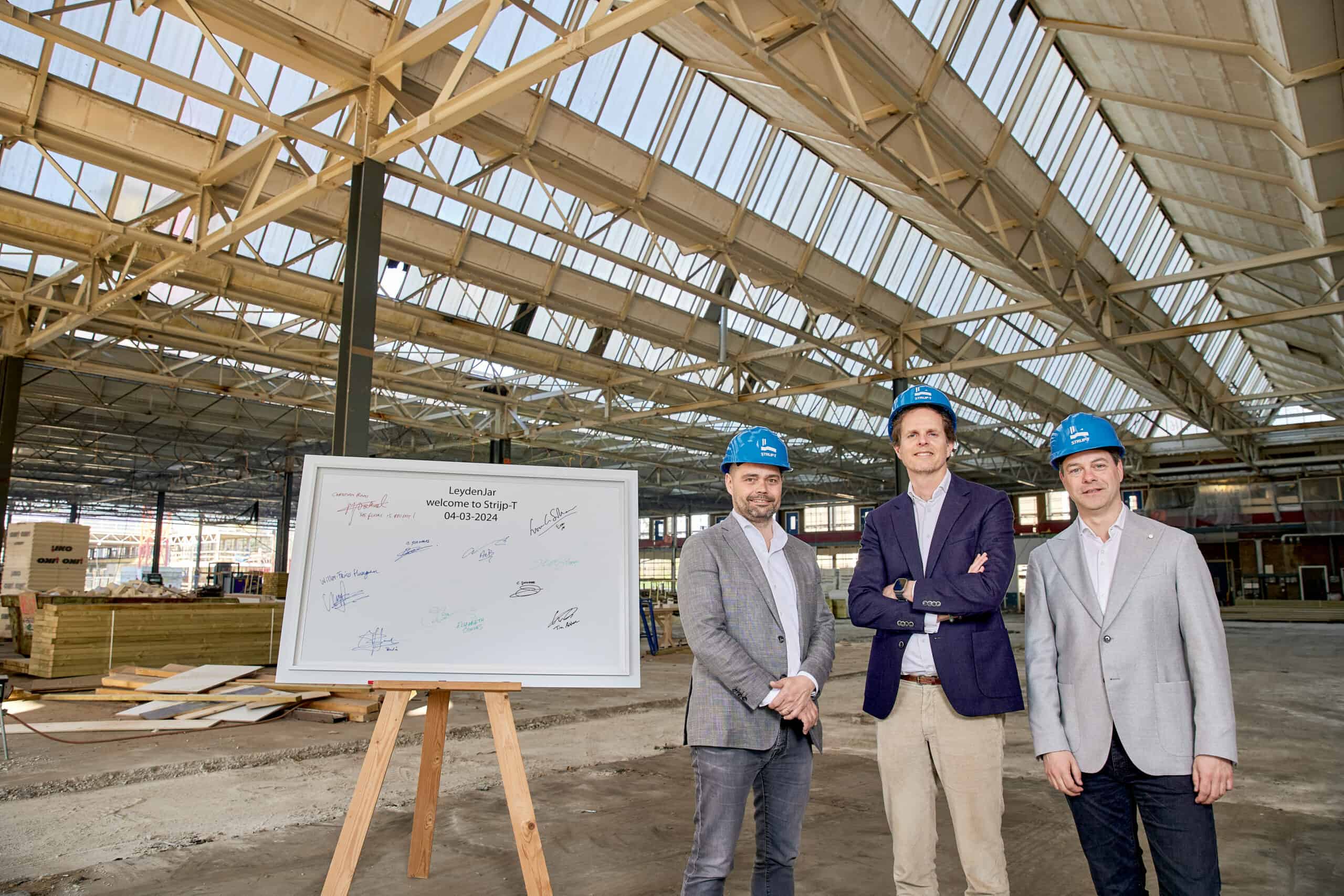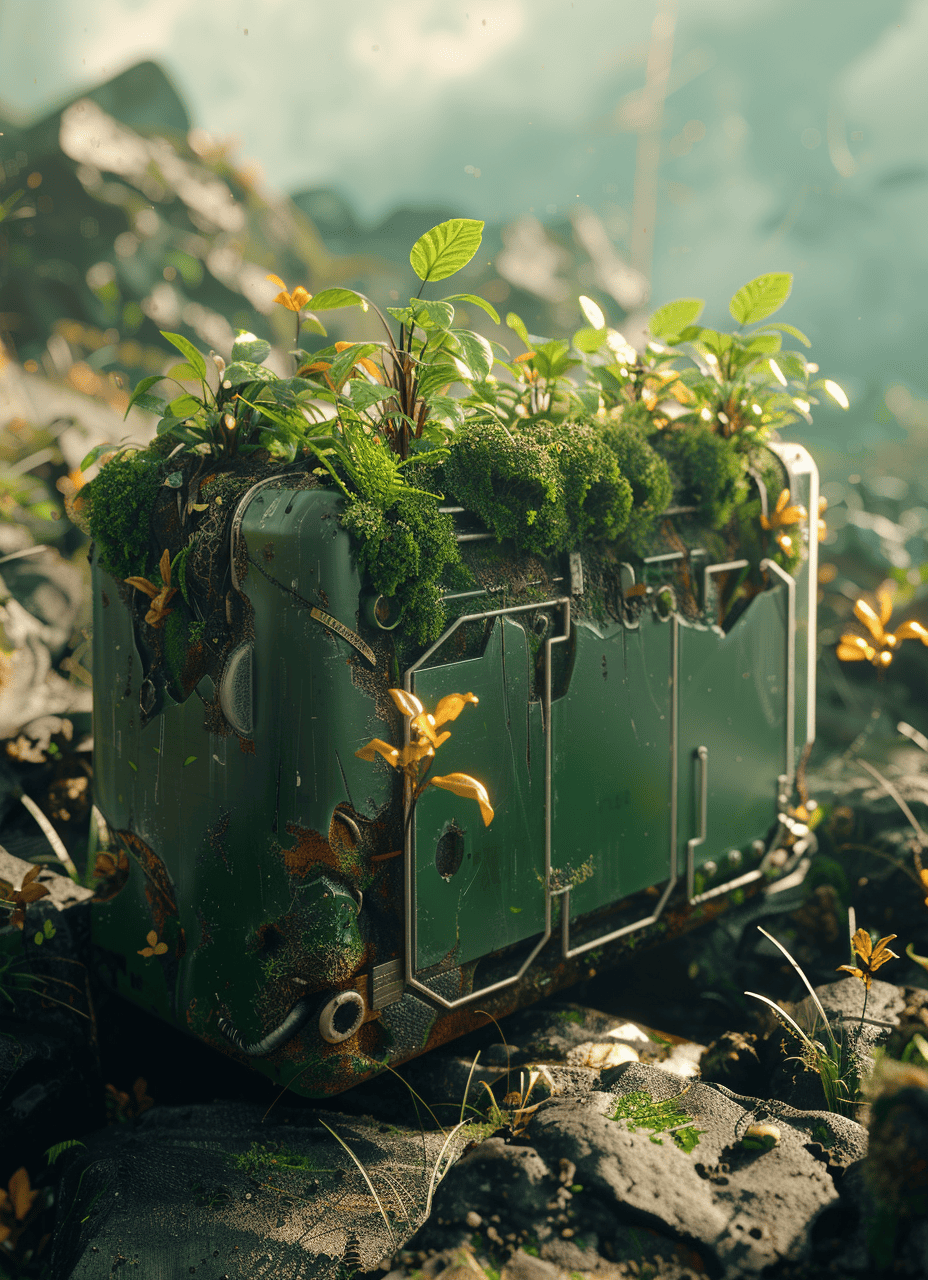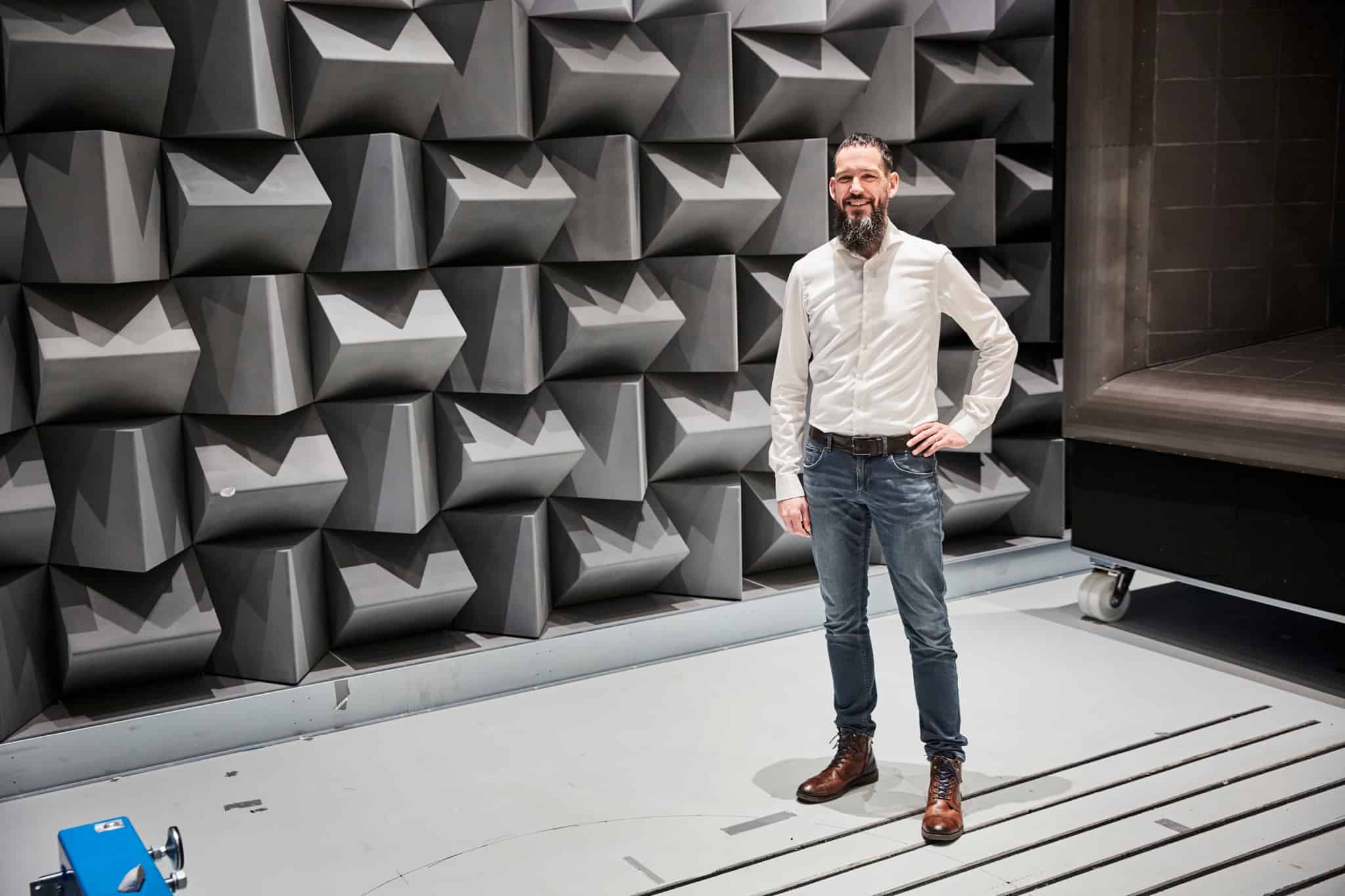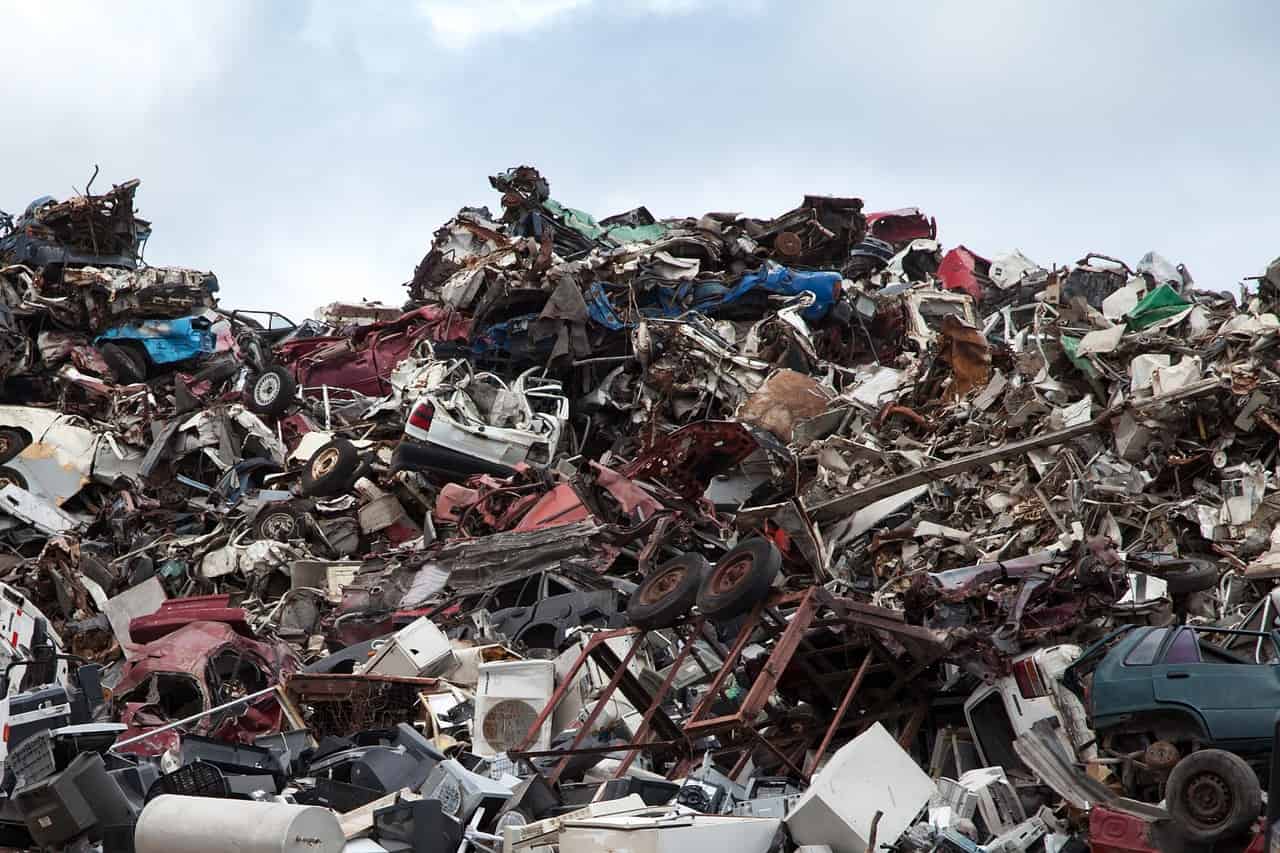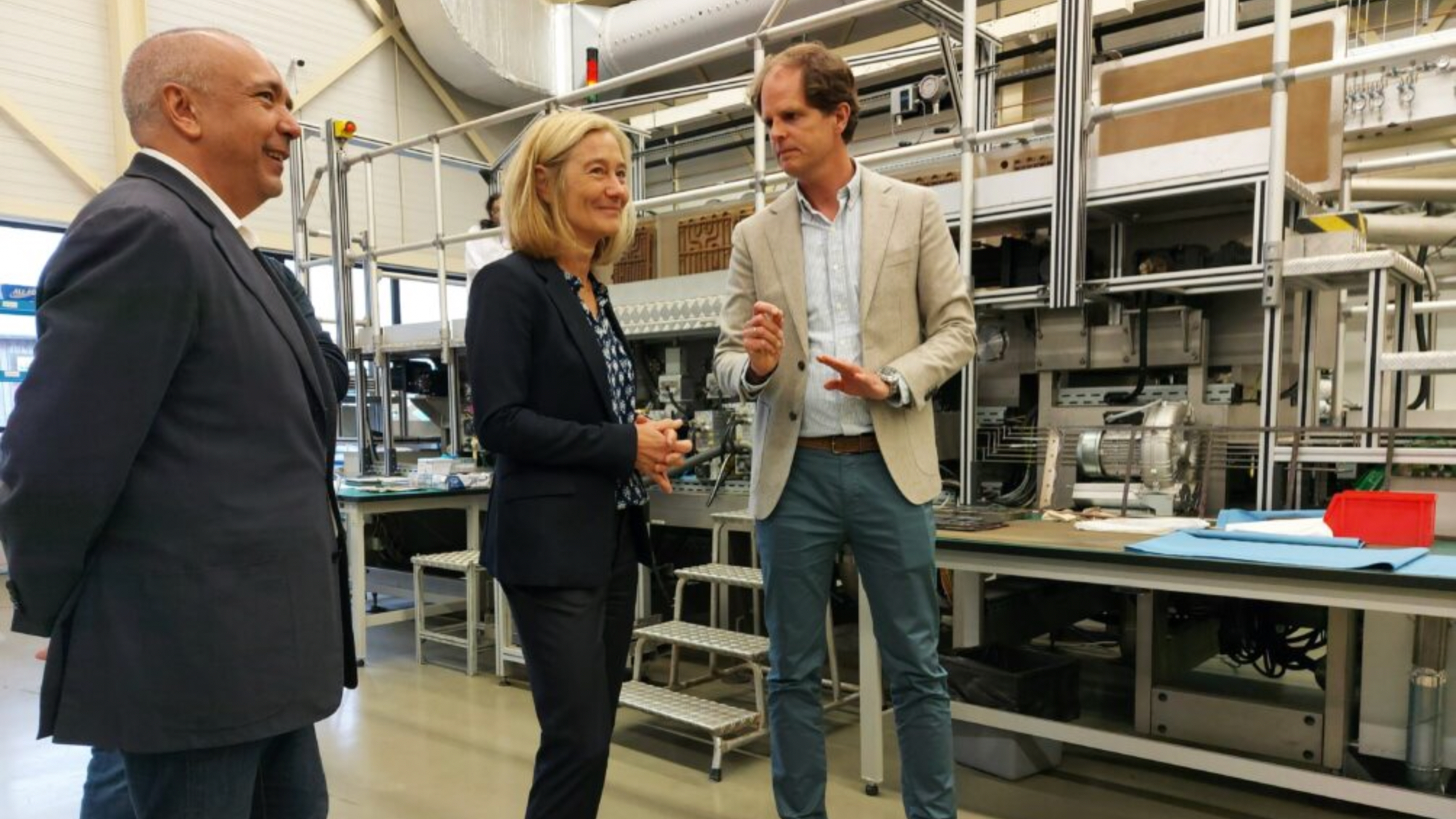
Rising above the noise of two large machines is the voice of Christiaan Rood of LeydenJar, who explains: “Our technology produces batteries with 70 percent more capacity. We use silicon, which can store up to 10 times more ions than graphite. Graphite is still the norm in the battery industry. We are now working on scaling up our technology. First in consumer electronics and then in cars.”
The Leiden-Eindhoven company manufactures anode foil – the plus side in a battery – that is 10 times thinner than existing materials. The production process – where a layer of silicon is ‘grown’ on copper in a vacuum chamber with plasma – is also faster and emits about 80 percent less CO2. “We are currently working on a third-generation machine to make mass production possible,” Rood explains in the company’s warehouse just a stone’s throw away from Eindhoven Airport.
Minister of Economic Affairs and Climate Policy Micky Adriaansens came Monday to see for herself where all the (provisional) allocated millions from the National Growth Fund are being spent. LeydenJar is in fact part of a larger consortium that is developing new high-tech equipment revolving around various ‘key technologies’. These include autonomous agricultural machines, technology for medicine research or better and more compact ways to store energy (such as the one that LeydenJar is working on). NXTGEN Hightech, as the collaboration is called, works with knowledge institutions, start-ups and scale-ups. Tom van der Horst of TNO and NXTGEN Hightech explained to the minister that there are about 340 partners in total who have a solid basis in the six domains.
The Netherlands needs to stay in the world top
“We are facing enormous societal challenges in the coming period. Not only due to climate change and the energy transition. We also need to shift towards a more sustainable food chain. In addition, we need fast and secure communication systems and we need to ease the burden on healthcare services. At the moment, we are making incredibly wonderful things in the high-tech manufacturing industry in the Netherlands that are of world class,” Van der Horst says.
In order to make sure it stays that way, a new generation of high-tech equipment is a must. In addition to knowledge, a substantial amount of money is also required. For research, business development and upscaling of all connected suppliers in the chain. This is where the National Growth Fund comes in. Between the period 2021 and 2025, the government is allocating 20 billion euros for projects that will create economic growth over the longer term. In the second round, the government has allocated 5 billion euros for 28 projects.
NXTGEN Hightech will receive 450 million euros from the fund in several tranches subject to conditions. This means that some projects within the subsidy application ‘still have to do some homework’ in order to meet the government’s conditions. According to van der Horst, more than 40 detailed project plans are ready for the development of high-tech machinery and equipment. “This is going to make a big contribution to the earning power and employment opportunities in the Netherlands. We think it will ultimately make an additional contribution to the gross national product to the tune of €11 to 16 billion per year.”
Daring to put your finger on the sore spot
In the meantime, Minister Adriaansens is nodding thoughtfully. “And how do you decide on those projects? How do you know where potential can be found? Van der Horst: “You have to have the courage to put your finger on the sore spot. Not everything is world-class high-tech and the projects have been cut back considerably over the past two years. By leaning as closely as possible to that world top, we aim to see that new ASMLs rise to the top.”
Earlier in the day, the minister visited another National Growth Fund project that has also been awarded conditional funding. While at the High Tech Campus, she visited Photon Delta, an international ecosystem of companies in photonic chip technology. This consortium will receive – also subject to conditions – 470 million that will be topped up to 1.1 billion euros by industry. In this project, companies are working on a new chip technology that transmits information via light. These photonic chips are faster and several times over more energy efficient than present-day chips. The partners are also working on new production methods for this type of technology. The goal is to be a leading ecosystem by 2030 with hundreds of companies, customers all over the world and a production capacity of more than 100,000 wafers per year.

Adriaansens is impressed with all the innovation that passes through Eindhoven. According to her, the projects clearly represent what the Growth Fund is intended for. “We are a prosperous country. But we still want to be one in twenty years’ time. Put very bluntly, how do we continue to put food on the table? Today I see the technology that we need in all the equipment we use. From your phone to your car. There are chips in everything, so count your blessings. But much of this technology hasn’t proven itself yet, so we think it’s important as a government to make sure that development in thses areas is given a boost.”
Technology with a watchful eye on the world
But, she stresses, it is not the case that the government is going to fund everything. “There was an application for 12 billion euros, but in the end 5 billion euros was freed up in this round. It is really healthy that the business community, investment funds and banks also do their bit.”
It is also important that all projects from the Growth Fund have “a watchful eye on the world. “Making money is great, of course, but we want to work towards certain goals. For example, there is quite a shortage of technicians. Can you train them within these trajectories? That presents solutions for the long term. We also want to achieve the climate targets, which means that technology has got to become cleaner. From what I hear, Leydenjar is going to make an important contribution to this in the field of battery technology.”

Photo: Minister Adriaansens visiting LeydenJar.


